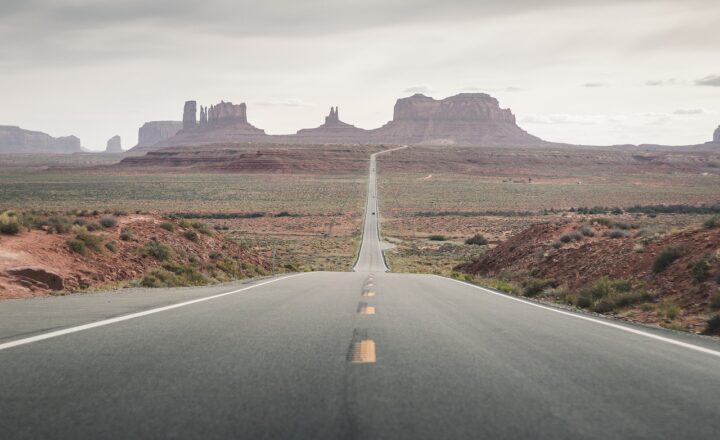Traveling through Time: How the 70s, 80s, 90s, and Beyond Influenced Modern Travel
November 19, 2024

Travel has always been an essential aspect of human culture and experience, but the ways we travel, the destinations we choose, and the experiences we seek have evolved remarkably over the decades. From the rise of air travel and budget airlines to the popularity of travel blogs and digital nomadism, each decade has left an indelible mark on how we explore the world. In this article, we will journey through the 70s, 80s, 90s, and beyond, examining the key trends, technological advancements, and cultural influences that have shaped modern travel.
The 1970s: The Golden Age of Travel
The 1970s marked a pivotal era in travel, often referred to as the golden age of air travel. After decades of strict regulations and high costs, the airline industry began to open up as the U.S. government deregulated the airlines in 1978, leading to cheaper fares and an increase in competition.
This newfound accessibility radically transformed the travel landscape:
- Airline Deregulation: The deregulation allowed for new airlines to enter the market, which meant more flight options for travelers. This led to a significant drop in airfare prices, making air travel a feasible option for middle-class families.
- Vacation Packages: All-inclusive vacation packages emerged, enticing families with deals that included flights, meals, and accommodations at resorts. This concept laid the foundation for the modern travel package approach.
- The Rise of Travel Agents: With the complexity of booking travel increasing, travel agents burgeoned, providing personalized services to help travelers navigate their options.
The cultural influences of the 70s—such as the hippie movement and a growing appreciation for diverse cultures—pushed travelers toward international destinations, specifically to places that emphasized experiencing local cultures, such as Southeast Asia and Europe.
The 1980s: Jet Set Culture and the Holiday Package Boom
The 1980s was characterized by the rise of the jetsetters and an explosion of package holidays. The concept of glamorous travel became mainstream, influenced heavily by pop culture, television, and movies.
Key developments included:
- Economic Prosperity: With an economic boom in many parts of the world, travelers had more disposable income for leisure travel. This contributed to an increased demand for luxury destinations, exotic locales, and cosmopolitan cities.
- Television Shows and Movies: Films like “The Beach” and television shows like “Miami Vice” glamorized travel. The depiction of glamorous destinations invited people to explore places with a newfound curiosity.
- Rise of Tour Operators: Major tour operators like Club Med created all-inclusive holiday packages, making vacation planning easier and appealing to families and groups travelling together.
During the 80s, the foundations for package holidays were fortified, setting the stage for modern travel package offers that still exist today.
The 1990s: The Internet and a New Era of Travel
As we moved into the 1990s, the arrival of the internet created a seismic shift in the way we approach travel. No longer were travelers reliant solely on travel agents to plan their trips; they now had the world at their fingertips.
Key changes included:
- The Birth of Online Travel Agencies (OTAs): The emergence of online travel agencies, such as Expedia and Travelocity, revolutionized the travel industry. Travelers could compare prices, read reviews, and book their itineraries from the comfort of their homes.
- The Rise of Budget Airlines: The 1990s saw the beginning of low-cost carriers like Ryanair and EasyJet in Europe, which further lowered travel costs and made flying more accessible to the masses.
- Consumer Empowerment: Access to information meant travelers could customize their trips, leading to a trend toward more independent travel and the exploration of off-the-beaten-path destinations.
This decade was a transformative time that heralded a new era where the traveler became the architect of their travel experiences.
The 2000s and Beyond: Digital Nomadism and Personalization
The 2000s further evolved the travel landscape, ushering in the age of personalization and the rise of the digital nomad. The influence of technology and social media transformed how we share travel experiences, interact with travel brands, and plan trips.
Key influences include:
- Social Media Revolution: Platforms like Instagram and Facebook allowed travelers to share their adventures in real-time, democratizing travel content. User-generated content became a vital source of information and inspiration for other travelers, leading to phenoms like influencers and travel bloggers.
- Digital Nomad Lifestyle: With remote work becoming more prevalent, more individuals choose to work while traveling. This trend encouraged a shift in travel toward long-term stays and immersive experiences rather than quick vacations.
- Customization and Personalization: Today’s travelers seek unique experiences tailored to their interests, moving away from conventional tours. Companies now offer customizable travel packages or bespoke experiences often crafted by locals.
As we stand poised in the 2020s, we recognize that today’s travel landscape reflects a beautiful tapestry woven from decades of change. The influences of the past continue to shape modern travel, encouraging us to forge deeper connections with the world around us.
Conclusion: The Path Forward
As we move into the future, the lessons learned from the past several decades will influence our travel choices. While we may look to trends of the past for inspiration, the ethos of modern travel revolves around connecting authentically, embracing new technologies, and prioritizing sustainability. Whether it’s discovering a hidden gem in a remote region or sharing an enriching experience on social media, the spirit of exploration will continue to guide our journeys.
With ongoing advancements in technology and shifting cultural values, one thing is certain: the future of travel is bound to be as dynamic and exciting as the decades that shaped it before us.






